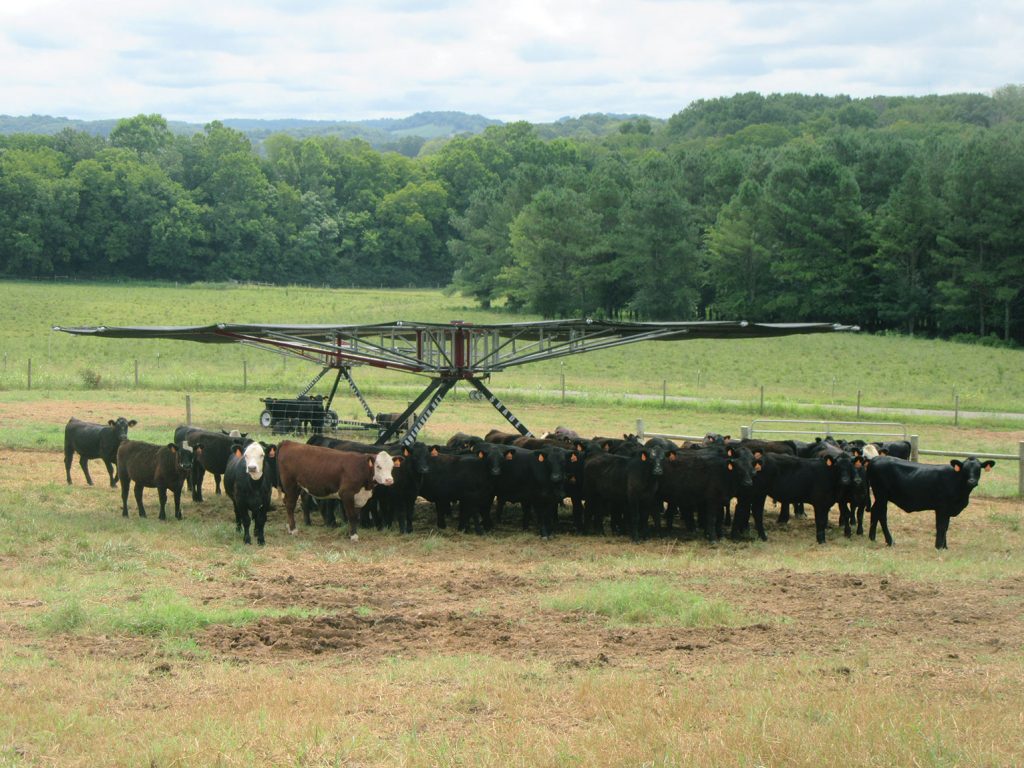
Livestock require shade to protect them from soaring summer temperatures
Summer will soon arrive in the Ozarks, and animals will be seeking comfortable places to spend hot days. Making sure that cattle can keep cool will reduce heat stress and other health issues;
“Cattle often stand in ponds to cool off. Discourage animals from this as pond water contaminated by feces from animals standing in it can transmit a variety of diseases including mastitis and several types of diarrheal diseases,” Dr. David Fernandez, Cooperative Extension Program Livestock Specialist at the University of Arkansas at Pine Bluff, said.
This type of behavior can be discouraged by providing adequate shade.
“Some research shows the most comfortable shade for cattle is natural or trees,” Eldon Cole, livestock field specialist with the University of Missouri Extension, explained. “Unfortunately, trees get destroyed with cattle traffic, they’re not movable and sometimes can act as a lightning rod.”
Cattle can benefit from man-made shade structures. Multiple blueprints and plans can be found online or through area Extension offices.
Shade cloth structures are practical and cost effective for producers, according to the Noble Research Institute. Shade cloth makes a good covering because it is relatively inexpensive, easily replaced and allows for good air flow. Use a UV-resistant cloth that blocks at least 80 percent of light and expect to replace it every five to eight years.
When building a shade cloth structure, producers need to make sure there is adequate space for the number of cattle who will use the structure to do so comfortably; this might mean building multiple shades.
“Mature cows need 30- to 40-square-feet of space, and yearlings up to 800 pounds need around 20 to 25 square feet,” Cole said. “Don’t forget bulls benefit from shade also.”
The height of shade cloth structures can vary depending on who a producer talks to, Cole said, but 10- to 12-feet high is common.
Whether or not a shade structure is permanent or portable (building portable shades on skids so they can be moved with equipment is common) will depend on the individual producer’s operation.
Reagan Bluel, dairy field specialist with MU Extension, explained a portable shade structure can keep cows from damaging valuable pasture space, especially when a producer participates in a rotational grazing program and is already of the mindset that animals will need to be moved regularly.
“When you move the cows, move the shelter,” she suggested.
While shade cloth is a popular material, there is no one-size-fits-all shade structure plan. Producers in the Ozarks can get very creative, and types of shade structures for livestock might range from tin three sided sheds to stacks of hay bales to old trampolines.
“Even very primitive shades make an economic improvement in growth and reproduction,” Cole said.




I’m very interested in this